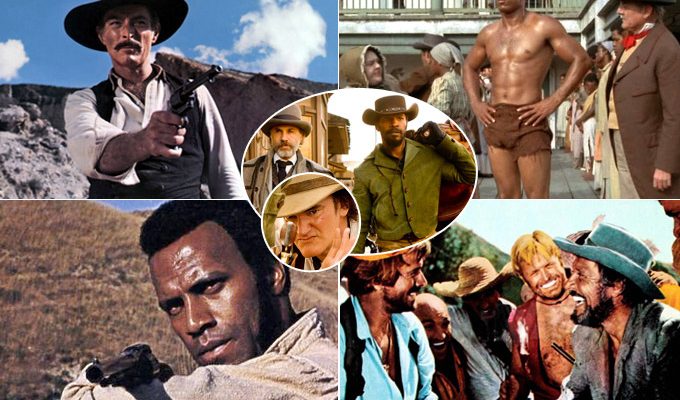It’s strange to think that it’s taken so many years for Quentin Tarantino to make a spaghetti western. Tarantino did previously describe “Inglorious Basterds,” the title of which comes from Enzo G. Castellari’s passable rip-off of “The Dirty Dozen,” as “my spaghetti western with World War II iconography” and “Kill Bill 2” has some brief homage-like nods. But “Django Unchained” is the first pastiche, defined as a work of fiction that appropriates elements of other genres for the sake of creating something new, that Tarantino’s done that’s primarily made of spaghetti western tropes. So when Franco Nero, the star of the hyper-violent original “Django” and many others, shows up in “Unchained,” it’s not just a smug wink to the audience: it’s Tarantino’s way of acknowledging the tradition of appropriation and exploitation that his movies come from.
More specifically, Tarantino’s use of anachronistic music, and fascination with amoral characters that re-fashion their identities for the sake of making what are essentially moral decisions—these are foundations of the spaghetti western, a genre characterized by blustery gore and surreal, lowbrow humor. This list is not representative of the films that most influenced Tarantino’s work however, but rather a sampling of what makes the spaghetti western, as a bastard genre, unique. The films are listed in chronological order.
5 Spaghetti Westerns
 “The Big Gundown” (1966)
“The Big Gundown” (1966)
Directed by Sergio Sollima (“Face to Face,” “Violent City”), this densely over-plotted spaghetti western highlights the genre’s tendency of championing uncouth anti-heroes over corrupt authority figures. Lee Van Cleef plays Corbett, a (relatively) morally upstanding bounty hunter whose civic-mindedness makes him a weirdly viable senatorial candidate (he only stalks killers that threaten his state’s citizens). Corbett is interested in running for office, and subsequently enlists the help of local king-maker Mr. Brockston (Walter Barnes). Brockston agrees to help him but only if Corbett catches and/or kills Cuchillo (Tomas Milian, who became famous for playing Mexican bandits), a thief and accused rapist. Though much of “The Big Gundown” is a playful chase, the film turns into a Zapata western mid-way through the film (more on the Zapata western later). Cuchillo is revealed to be a bandit hero and his actions are (semi-)excusable. In fact, Sollima was so enamored of Milian’s character that he’s the focus of, “Run, Man, Run,” a semi-sequel that doesn’t include Corbett at all. But what makes “The Big Gundown” so much more exciting is its see-sawing narrative, which eventually alternates between Corbett’s hunt, and revelations about Cuchillo’s past. In that sense, “The Big Gundown” is a mutt amongst mutts.
 “Navajo Joe” (1966)
“Navajo Joe” (1966)
Burt Reynolds stars as the titular Native American hero in Sergio Corbucci’s relatively straightforward action-adventure. Like the Man with no Name, Joe doesn’t flaunt his good intentions when he’s asked to defend a small town from marauding thieves. Instead, he exploits the fact that the town’s inhabitants, many of whom consider Joe to be a lesser man just because he’s a Native American, now need him. For each heavy that he dispatches, Joe asks for a dollar from each of the town’s inhabitants. Reynolds’s role as Joe was different than even some of the more psychologically-rich western roles Reynolds had previously played. “Navajo Joe” is also intriguing for the way that Corbucci forces his small town of bigots to rescue Joe midway through the film. Joe’s not invincible: he gets caught and beaten pretty badly after he gets outnumbered. In that moment, it’s unclear whether or not Joe will succeed in his mission, especially if you’ve seen other Corbucci westerns like “The Great Silence” (mentioned below). That decision is a good indication of what Corbucci likes about Joe: he’ll fail unless the ungrateful people he’s sticking his neck out for choose to help him, too. When Joe gets captured, hung up by his feet, and then viciously beaten, the film’s plot looks believably bleak. That moment of doubt is pretty memorable.

